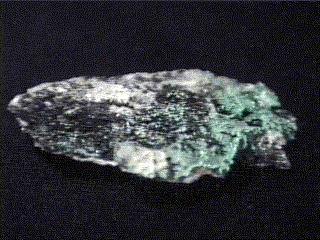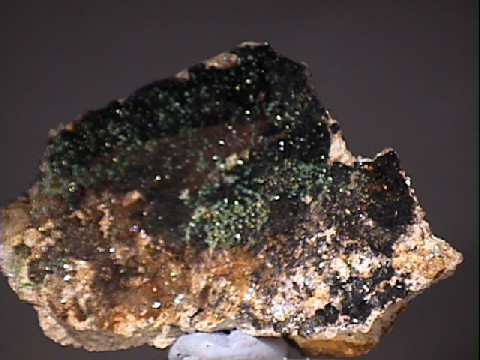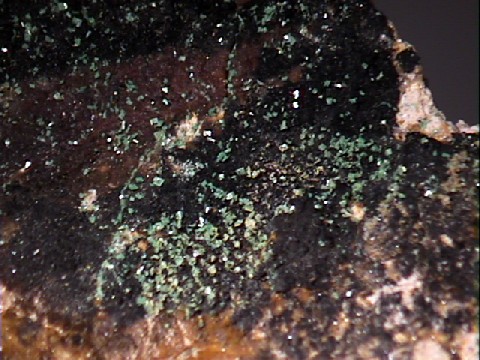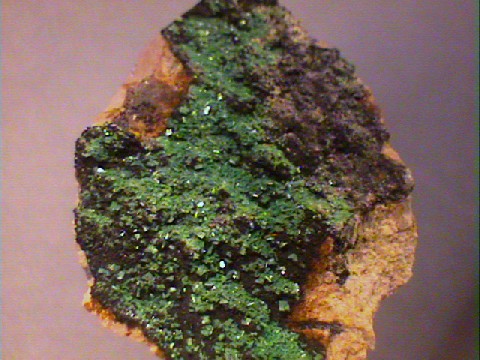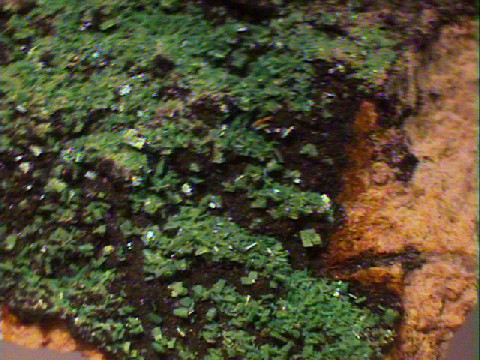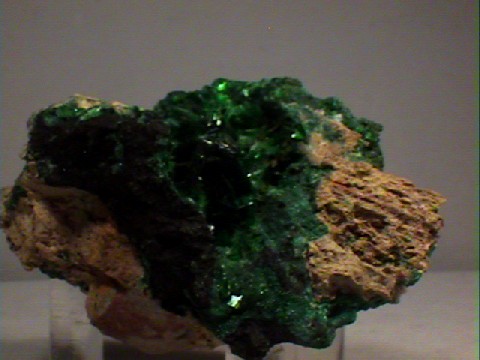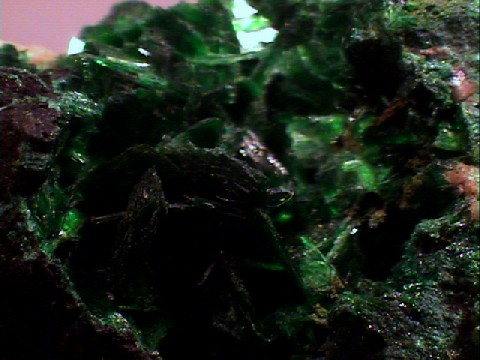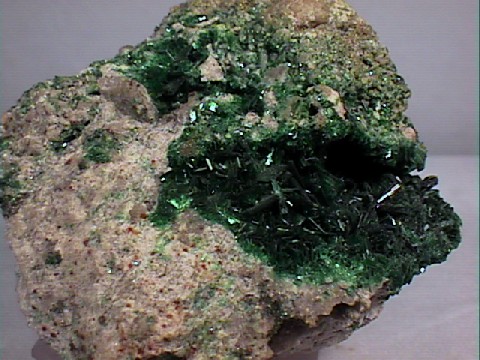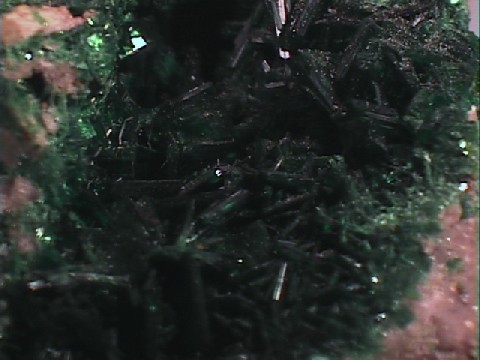 The Mineral META-TORBERNITE
The Mineral META-TORBERNITE
- Chemistry: Cu(UO2)2(PO4)2-6 to 8H2O , Hydrated Copper Uranyl Phosphate
- Class: Phosphates
- Group: Meta-autunite/meta-torbernite
- Uses: a very minor ore of uranium and mineral specimens
Specimens
The structure of meta-torbernite is composed of phosphate tetrahedrons linked to uranium-oxygen groups that form distorted octahedrons. The phosphates and uranium groups lie in sheets that are weakly held together by water molecules. This structure produces the tabular habit, the one perfect direction of cleavage, and the relative softness.
Remember, this is a radioactive mineral and should be stored away from other minerals that are affected by radioactivity and human exposure should always be limited.
PHYSICAL CHARACTERISTICS:
- Colors are various shades of pale to dark green to almost black.
- Luster is vitreous to dull.
- Transparency crystals are translucent to opaque.
- Crystal System is tetragonal; 4/m 2/m 2/m
- Crystal Habits include tabular square crystals dominated by two pinacoid faces. Crystals can form in parallel growths giving a "stacked book" kind of look. Also as crusts, micaceous, foliated and scaly aggregates. Almost all meta-torbernite crystals are pseudomorphs of torbernite.
- Cleavage is perfect in one direction.
- Fracture is uneven.
- Hardness is 2.5
- Specific Gravity is approximately 3.7 (above average for translucent minerals)
- Streak is a pale green.
- Associated Minerals are
autunite,
uranophane , uranocircite, torbernite, uraninite and other uranium minerals. - Other Characteristics: radioactive, and cleavage sheets are surprisingly brittle.
- Notable Occurences include Cornwall, England; Athabasca, Saskatchewan, Canada; Shaba, Zaire; Saxony, Germany and France.
- Best Field Indicators are color, crystal habit, non-fluorescence, higher density than torbernite, radioactivity, associations, and brittle cleavage sheets.



